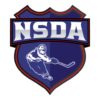Face-offs are a vital component of professional hockey, and there are numerous ways that players can approach them. This guide, drawing insights from Dwayne Blais’s instructional video, will delve into the intricacies of face-offs, teaching both beginners and seasoned players how to enhance their game.
Setup:
- The Circle: It’s important to remember that most referees are stringent about your setup within the circle. Young players are encouraged to widen their stance and position themselves on the balls of their feet to maintain a strong and balanced posture. Observing NHL players, one will notice how they get exceptionally low when taking face-offs.
- Hand Positioning: Many youngsters mistakenly hold their hands too high up on the stick. This restricts the agility of the blade. By lowering your hands and choking up slightly on the stick, you can achieve quicker blade movements, which is essential for winning pucks during face-offs.
- Alignment: Referees typically require players to remain fairly square within the circle, without turning their feet sideways. However, some subtle “cheating” or slight positioning changes can be beneficial if not noticed by the official.
- Stick Position: There are designated spots within the circle where players place their sticks. Often, the visiting team’s player must place his stick down first, allowing the home team player a slight advantage.
Face-Off Techniques:

- Sweep the Circle: A fundamental technique, especially for beginners, is sweeping the circle. This involves a sweeping motion aiming to secure the puck, regardless of its exact drop position within the circle.
- Hand Rotation for Power: As players progress, some choose to rotate their top hand on their backhand side when trying to win a puck. This technique provides added power, allowing players to exert more force during face-offs.
- Tactics & Strategies: As players age and refine their skills, their approach to face-offs becomes more tactical. Much of the success in face-offs is psychological; studying the opponent’s stance and hand positioning can often predict their move. For instance, if an opponent looks poised to send the puck in a specific direction, a player can opt to block their stick rather than directly competing for the puck.
- Using the Body: Physicality is a big part of face-offs. Players can turn, spin, and even use their feet to guide or block the puck. The key is to maintain a quick reflex and positional flexibility.
- Reacting to the Referee: It’s vital to pay attention to the referee’s hand during face-offs. Instead of fixating on the dot, players should focus on the referee’s hand movement. The moment it shifts indicates the puck’s drop, enabling players to react instantly.
- Maintaining Proper Hand Position: It’s crucial to keep hands away from the body when handling the stick. A greater distance from the body provides more mobility and agility, ensuring faster and more accurate movements during face-offs.
Conclusion:
Face-offs, though seemingly simple, are an intricate part of hockey that can dramatically affect the flow and outcome of the game. While there are countless ways to approach them, mastering the basics and understanding the underlying strategies can drastically improve a player’s performance. Remember to always maintain a solid body position, ensure proper stick handling, and keep a keen eye on the referee to gain that split-second advantage.
Want to connect and share ideas with other hockey coaches from around the world? Join our Minor Hockey Coaches Group on Facebook, which has coaches from Canada, the United States, Europe and even Australia.
Looking for help to practice more of your skills? Check out the rest of our videos here.
